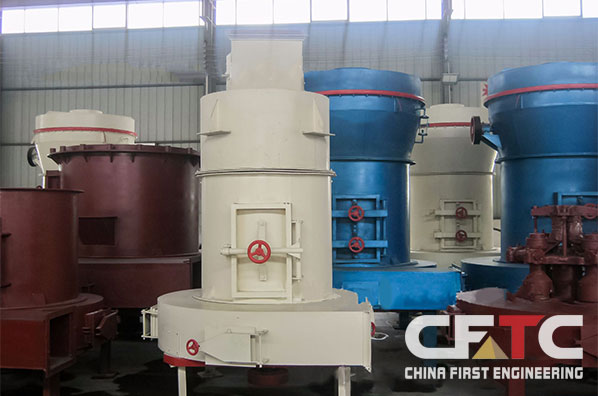Bentonite has water swelling, cohesion, adsorption, lubricity, catalytic activity, thixotropy, plasticity and cation exchange properties. According to the type, content and crystalline chemical properties of interlayer exchangeable cations contained in montmorillonite, bentonite can be divided into different types such as sodium-based, calcium-based, magnesium-based and calcium-sodium-based bentonite.
Bentonite is a non-metallic ore with a soft texture. When grinding it, if the size of the raw ore is too large, the feed port of the mill is limited. After preliminary crushing, it can be sent to the pulverizer for grinding finished powder.
1. Crushing: The Mohs hardness of bentonite is 1-2, which is a soft non-metallic mineral and can be initially crushed.
2. Drying: Natural or heated drying can be used to remove moisture (water content ≤ 12%-6%). In order to prevent the performance of bentonite from changing due to structural changes of montmorillonite, the drying temperature should be lower than 250 °C, and the time is not easy.
3. Milling: In order to meet the requirements of high fineness of bentonite in industries such as paper, plastic and rubber products. Bentonite grinding equipment can usually choose European version mills, super-pressure trapezoidal mills and vertical mills for grinding.
Generally, the application field of bentonite requires a powder fineness of 200 mesh. The above-mentioned European mills, trapezoidal mills and vertical mills can meet the requirements. Each series of mills has different models, which can be selected according to specific production needs.Bentonite is processed by vertical grinding equipment
Vertical mill grinding bentonite process
The raw ore is fed into the storage hopper by a forklift, and a manual rod valve and a quantitative feeder are set under the hopper. After the material is measured, it is fed by a belt conveyor (or hoist) with a large inclination angle, and then fed into the vertical mill through a rotary air lock feeder grind.
A self-unloading iron remover is installed in the horizontal section of the belt conveyor with a large inclination to remove iron from the material.
Under the centrifugal force of the rotating grinding disc, the material fed into the mill moves to the edge of the grinding disc and enters the grinding roller table.Under the action of the hydraulic device and the transmission arm, the grinding roller exerts pressure on the material in the roller table, and the material is squeezed, sheared and ground. The high-speed airflow blows up, the large particles fall into the bottom of the grinding table, the fine particles are sorted by the top powder separator, and the qualified fine powder (finished product) flows out of the mill along with the airflow, and is collected by the air box pulse bag filter as the finished product, which is conveyed pneumatically. The equipment is sent to the finished product warehouse, and a bulk or packaging machine (small bag/ton bag) is set under the warehouse for packaging and delivery; If the moisture content of the raw material is relatively high, hot air can be introduced to dry the material, and the hot air comes from a boiling furnace or other heat sources.
*We will provide you with the most suitble producets*
*Wo Promise to reply within 24 hours.*